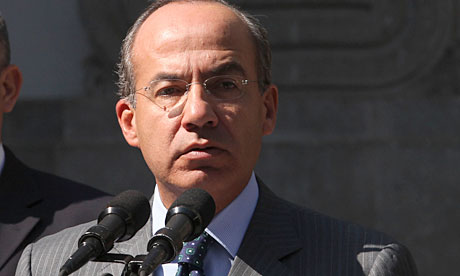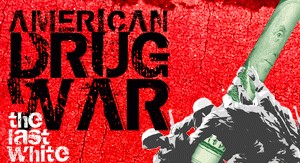United States – Punishment and Prejudice Racial Disparities in the War on Drugs,Human Rights Watch report June 2000
V. THE IMPACT OF THE WAR ON DRUGS ON U.S. INCARCERATION
The single greatest force behind the growth of the U.S. prison system since the mid-1980s has been the national “war on drugs.”45 Spearheaded by major federal drug policy initiatives that significantly increased penalties for drug offenses and markedly increased federal funds for state anti-drug efforts, federal and state measures to combat drugs have concentrated on criminal law enforcement rather than prevention and treatment.46 An estimated 400,000 people — almost one-quarter of the total incarcerated population in the U.S. — are confined in local jails and state and federal prisons on drug charges.47 Citing the extraordinary number of drug offenders in U.S. prisons, General Barry McCaffrey, has decried the creation of what he termed a “drug gulag.”48
Policies adopted to battle the use and sale of drugs have led to marked increases in arrest rates, in the likelihood of going to prison, and in the length of sentences for drug offenders. Between 1980 and 1997, the number of annual drug arrests tripled to a high of 1,584,000.49 The rate of drug arrests per 100,000 residents rose from 288 to 661.50 The rate of commitment to state prison per drug arrest quintupled between 1980 and 1990, rising from 19 prison commitments per 1,000 arrests to 103 per 1,000.51 The estimated time served by drug offenders in state prisons increased a full year between 1987 and 1996; federal drug sentences doubled.52
As of 1997, there were an estimated 285,009 men and women in state and federal prisons on drug charges, a twelvefold increase since 1980. 53 Relative to the adult population, the rate of incarceration of drug offenders hasincreased almost tenfold, rising from less than 15 inmates per 100,000 adults to 148 per 100,000.54 In 1980, drug offenders comprised only six percent of state prison populations. By 1998, they constituted 21 percent. In federal prisons, drug offenders now comprise 59 percent of all inmates, whereas they represented only a quarter of federal inmates in 1980.55
Drug Offenders Admitted to Prison
Between 1980 and 1998, the number of new admissions of drug offenders to state and federal prison soared, exceeding 1.5 million in total (Figure 5). In recent years, about one hundred thousand drug offenders have been admitted to prison annually.
Nationwide, 31 percent of all admissions to state prison in 1996 were drug offenders. Among the states, the proportion of drug offenders varied between a low of 10 percent in Maine toa high of 46.6 percent in New Jersey and 44.7 percent in New York (Figure 6). In three quarters of the states, more than one in five persons sent to prison was convicted of a drug offense. In contrast, violent offenders accounted nationwide for only 26.8 percent of new state prison admissions.
Rate of Admission of Drug Offenders
There is a remarkable range in the extent to which states subject their populations to incarceration on drug charges (Table 8). The rates of admission of drug offenders to prison per 100,000 adult residents vary from a low of 6 per 100,000 in Maine to a high of 91 in California. The ten states that have the highest rates of drug offender admissions relative to population are: California, Illinois, Louisiana, Maryland, New Jersey, New York, Ohio, Pennsylvania, Virginia, and Washington.
Nationwide, drug offenders are sent to prison at a rate, relative to population, that is 13 percent higher than the rate for violent offenders (Table 9). In one half of the states reporting to NCRP, the admission rates for drug offenders exceed those for persons convicted of violent crimes. Six states — Arkansas, California, Illinois, New Jersey, New York, and Virginia — send drug offenders to prison at rates that range from 50 to 100 percent higher than the rates for violent offenders.
Drug Offending and Prison Admissions
The broad range in admission rates for drug offenders across the country cannot be ascribed simply to variations in drug use and sales in different states. Table 10, covering twenty six states, presents federal estimates of the percentage of the population over 12 in those states who were current illicit drug users in 1991-1993.56 Although some drug users may cross state lines to purchase drugs, we assume that relative rates of drug use in each state also roughly reflect relative amounts of drug sale activity. Comparing drug use rates with calculations of the rate relative to population at which drug offenders in those states were sent to prison reveals the lack of a consistent correlation between drug offending and the imprisonment of drug offenders. First, the percentage of the population that used drugs varied among states from 4.1 to 8.2 percent, compared to a range in drug offender admission rates that extended from 8 to 91. Second, the states with higher rates of drug use were not necessarily the states with higher drug offender admission rates. Oregon, for example, had the third highest percentage of drug use, yet it had one of the lowest rates of drug admissions. In contrast, California had both the highest rate of drug use and the highest rate of drug offender admissions. Third, lower drug use did not necessarily correlate with low drug offender admissions rates. The percentage of Illinois’ population that used drugs was quite low, yet the statehad the second highest rate of drug offender admissions. Similarly, Louisiana had a relatively low rate of drug use yet it had one of the highest rates of drug admissions.
Obviously, no definitive conclusions can be drawn from a comparison of these two rather crude sets of figures. Nevertheless, the data suggest the explanation for the different rates at which people are sent to prison for drug offenses must lie in different penal policies and priorities among the states, including different law enforcement resources and strategies, prosecutorial charging preferences, and sentencing laws, as well as structural and demographic factors, e.g., degrees of urbanization, rather than rates of drug offending.
Drugs Involved In Offense
The NCRP data does not permit reliable calculations about the extent to which different “hard” drugs (e.g., cocaine, amphetamines, heroin) were involved in drug offenses. The data is somewhat better with regard to the identification of marijuana offenses, which were identified as the drug involved in 4.3 percent of all drug admissions. 57 In nine states marijuana offenses accounted for more than ten percent of drug admissions: Alabama (16.09), Iowa (17.22), Kentucky (12.4), Mississippi (14.50), New Hampshire (28.83), North Dakota (43.02), South Carolina (11.25), South Dakota (18.3), and West Virginia (20.63) (Table 11).
Type of Drug Conduct
People are sent to prison for both drug possession and sales-related conduct. In 1996, the simple possession of drugs (excluding possession with intent to sell) was the most serious conviction offense for 28 percent of all drug offenders admitted to state prison (Table 12). Fifty-six percent of drug offender admissions were for drug sales, and the rest for other drug-related offenses (e.g., fraudulent prescriptions and unlawful possession of syringes). In nine states (Alabama, Colorado, Georgia, Minnesota, Mississippi, South Dakota, Texas, Utah, and Virginia) more than 50 percent of drug offenders sent to prison were convicted of simple possession.
Low-level offenders
Whether convicted on possession or sales charges, relatively few of the drug offender prison admissions over the past two decades have been high-profile drug traffickers, “king pins,” or persons occupying high level positions within sophisticated drug dealing enterprises. 58 Available research indicates that most incarcerated drug offenders are bit players in the drug trade, such as small-time dealers selling to customers on the streets, addicts trying to support their habit,59 “mules” or couriers trying to earn some extra cash, and women pressed into occasional service by drug dealing boyfriends. Most of the men and women incarcerated in New York prisons on drug offenses, for example, whether first or repeat offenders, were convicted of low level drug offenses involving minute drug quantities.60 Even federal drug defendants, who would be expected to have higher level profiles than state drug defendants, are primarily low level offenders.61 According to the United States Sentencing Commission, only 11 percent of federal drug defendants were high level dealers; more than half were street level dealers or mules. 62Another federal analysis indicated that over one-third of the drug felons in federal prisons were low level nonviolent offenders.63
Some supporters of the war on drugs have justified the incarceration of drug offenders on the assumption that it incapacitates people who are dangerous apart from their drug-dealing. Research to date on the criminal histories of incarcerated drug offenders consistently shows, however, that most cannot reasonably be considered dangerous individuals. Three quarters of the drug offenders in state prisons in 1997 had no prior convictions for violent crimes; one third had prior sentences limited to drug offenses.64 In 1991, fourteen percent of the drug offenders in state prisons had no prior sentence; 84 percent had no prior sentences for violent crimes.65 Human Rights Watch’s analysis of incarcerated drug offenders in New York revealed that the majority had nonviolent criminal histories.66 Among felony defendants in large urban counties arrested on drug charges, 38 percent had no prior convictions, even for a misdemeanor; only 11 percent had a prior felony conviction for a violent crime.67 Independent researchers determined that Arizona, New Mexico, and New York imprison large numbers of drug-only offenders, i.e. people whose current offense is a drug crime and whose past criminal offenses were limited to low level nonviolent drug crimes. 68 In Massachusetts, an analysis of a sample of incarcerated male drug offenders revealed most had either no prior criminal record, or records classified as minor or moderate.69
45 Michael Tonry, a prominent U.S. criminologist, has pointed out that the war on drugs gathered steam after the use of cocaine had already begun to decline. Federal drug use surveys show cocaine use rose markedly between 1983 and 1985, and then began a steep decline, leveling off in 1992. Tonry, Malign Neglect. Federal drug use surveys indicated the number of cocaine users declined from 5.7 million in 1985 to 1.4 million in 1992 and has not changed significantly since then; the number of frequent cocaine users has not changed much since 1985; and the number of occasional users decreased from 7.1 million in 1985 to 2.4 million in 1994 and has remain unchanged since then. The number of current crack users has not changed since 1988. U.S. Department of Health and Human Services, Substance Abuse and Mental Health Services Administration (SAMHSA), Summary Findings from the 1998 National Household Survey on Drug Abuse, Washington, D.C., 1999, p. 16. The trends are probably more reliable than the precise numbers because of a large sampling error and potentially significant underreporting in the survey. The rise, leveling off, and decline of crack varied in its timing in different cities and areas across the country. Andrew Lang Golub and Bruce D. Johnson, “Crack’s Decline: Some Surprises Across U.S. Cities,” National Institute of Justice: Research in Brief, Washington D.C.: U.S. Department of Justice, July 1997.
46 About two-thirds of the federal drug budget is allocated to interdiction, law enforcement and supply reduction efforts. One-third is allocated for prevention, treatment and demand reduction. Office of National Drug Control Policy, The National Drug Control Strategy, 2000. These proportions have not varied significantly in recent years.
47 Marc Mauer, “The Crisis of the African-American Male and the Criminal Justice System,” written testimony before the U.S. Commission on Civil Rights, April 15-16, 1999 (citing data from the Bureau of Justice Statistics).
48 CBS This Morning, September 13, 1999.
49 The Sentencing Project, Drug Policy and the Criminal Justice System, (Washington D.C.: The Sentencing Project, August 1999),citing FBI, Crime in the United States, various years. Arrests have soared not just for “hard” drugs such as cocaine and heroin, but for marijuana as well. In 1996, there were over 406,000 arrests for marijuana possession alone. U.S. Department of Justice, Federal Bureau of Investigation (DOJ/FBI), Uniform Crime Reports: Crime in the United States, 1998 (Washington, D.C.:USGPO, 1998). (Figure calculated by Human Rights Watch from data in table 4.1 and table 29).
50 Blumstein and Beck, “Population Growth,” pp. 29-31.
51 The rate of commitments per arrest dropped to 77 per 100,000 in 1996. BJS, “Truth in Sentencing.” The increase in the likelihood of being sent to prison following an arrest and its impact on state incarceration rates was greater for drug offenses than for murder, assault, robbery, burglary, and rape. Blumstein and Beck, “Population Growth,” p. 41.
52 Time served by drug offenders in state prison rose from 1.3 years to 2.3 years; in federal prisons the time rose from seventeen months to forty-seven. Blumstein and Beck, “Population Growth,” p.36
53 In 1980, an estimated 23,900 people were in state and federal prison for drug offenses. Blumstein and Beck, “Population Growth,” p. 21. In 1998, there were an estimated 227,400 drug offenders under the jurisdiction of state correctional authorities at year end 1998. BJS, “Prisoners in 1998.” An estimated 57,609 drug offenders were in the custody of federal correctional authorities for drug offenses. Sourcebook 1998, Table 6.52
54 Blumstein and Beck, “Population Growth,” pp. 20-21.
55 BJS, “Prisoners in 1998.” Justice Research and Statistics Associates, Crime and Justice Atlas, Office of Justice Programs, National Institute of Justice, U.S. Department of Justice, June 1998, p. 134.
56 U.S. Department of Health and Human Services, Substance Abuse and Mental Health Services Administration (SAMHSA), Substance Abuse in States and Metropolitan Areas: Model Based Estimates from the 1991-1993 National Household Survey on Drug Abuse Summary Report, Washington, D.C.,1996.
57 The Bureau of Justice Statistics has reported that marijuana was involved in the current offense of 12.9 percent of drug offenders in state prison and 18.9 percent of drug offenders in federal prison. Christopher Mumola, “Substance Abuse and Treatment, State and Federal Prisoners, 1997,” Bureau of Justice Statistics, U.S. Department of Justice (January 1999), p. 2.
58 See., e.g., William J. Sabol and James P. Lynch, “Crime Policy Report: Did Getting Tough on Crime Pay?” The Urban Institute, August 1997, available at http://www.urban.org/crime.crime.htm.
59 Forty-two percent of state prisoners convicted of drug offenses reported being under the influence of drugs at the time they committed their current offense. BJS, “Substance Abuse and Treatment.”
60 Human Rights Watch, Cruel and Usual;Human Rights Watch, “Who Goes to Prison for Drug Offenses? A Rebuttal to the New York State District Attorneys Association,” available at http://www.hrw.org/hrw/campaigns/drugs/ny-drugs.htm; Human Rights Watch “Official Data Reveal Most New York Drug Offenders Are Nonviolent,” also available at http://www.hrw.org/hrw/press/1999/jan/y-drug0107.htm.
61 Federal drug law enforcement agencies place a priority on major drug traffickers and other significant drug law offenders.
62 United States Sentencing Commission, Cocaine and Federal Sentencing Policy, 1995. p. 172. The Sentencing Project, Drug Policy and the Criminal Justice System, p.3.
63 U.S. Department of Justice, “An Analysis of Nonviolent Drug Offenders with Minimal Criminal Histories,” (unpublished report, February 4, 1994). For a discussion of the Department of Justice’s findings, see Marc Miller and Daniel Freed, “Editors Observations on the Disproportionate Imprisonment of Low-Level Drug Offenders,” 7 Federal Sentencing Reporter 3 (New York: Vera Institute of Justice, July, 1994).
64 BJS, “Substance Abuse and Treatment,” p. 2.
65 In 1991, 126,929 out of a total of 150,305 drug offenders in state prison had no prior felony convictions. Sabol and Lynch, “Crime Policy Report,” Table 3. Alfred Beck et al., “Survey of State Prison Inmates 1991,” Bureau of Justice Statistics, U.S. Department of Justice (March 1993).
66 Human Rights Watch “Official Data Reveal Most New York Drug Offenders Are Nonviolent”; Human Rights Watch, “Who Goes to Prison for Drug Offenses? A Rebuttal to the New York State District Attorneys Association.”
67 Timothy C. Hart and Brian A. Reaves, “Felony Defendants in Large Urban Counties, 1996,” Bureau of Justice Statistics, U.S. Department of Justice (October 1999), Tables 11 and 12.
68 See, John Dilulio, “Against Mandatory Minimums,” National Review, May 17, 1999. Anne M. Piehl, Bert Useem and John Dilulio, Right Sizing Justice: A Cost-Benefit Analysis of Imprisonment in Three States, (New York: Manhattan Institute, September 1999).
69 William N. Brownsberger and Anne M. Piehl, “Profile of Anti-Drug Law Enforcement in Urban Poverty Areas in Massachusetts,” November 1997. Brownsberger, a research fellow in drug policy at Harvard Medical School and Assistant Attorney General for Narcotics and Special Investigations prepared this report with a grant form the Robert Wood Johnson Foundation Substance Abuse Policy Research Program.




